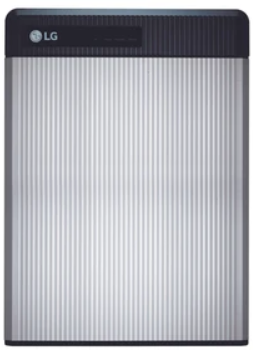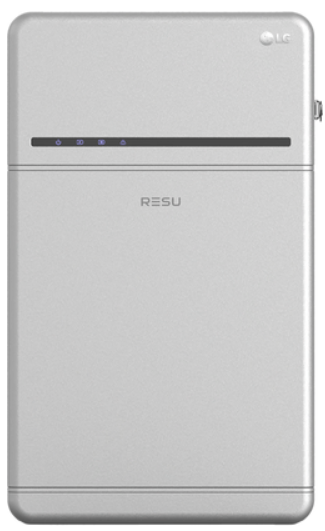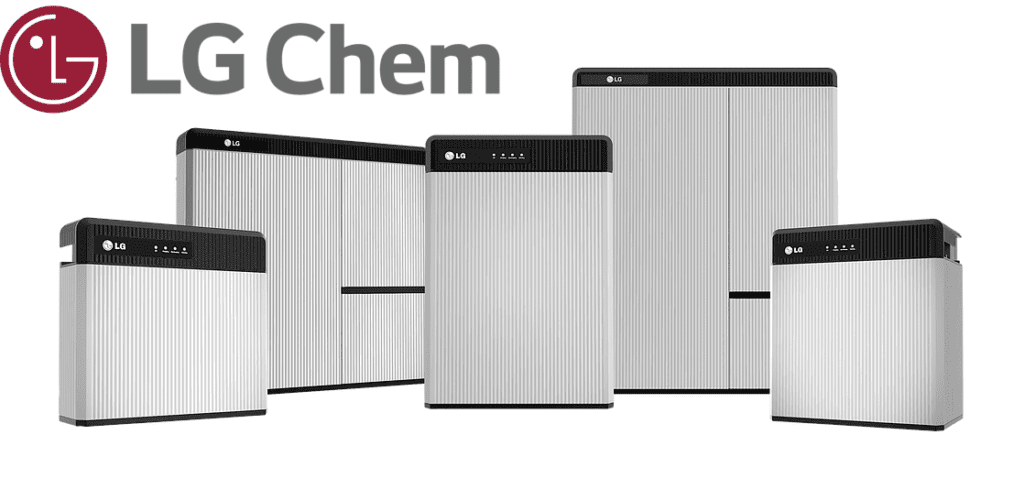Background on LG Chem – Company History
⚠️Urgent Electrical Safety Recall LG Energy Storage System (ESS) Home Batteries:
The ACCC and LG Energy Solutions ESS Battery Division have issued an Urgent Electrical Safety Recall. Affected Batteries may overheat and catch on fire, which can result in severe property damage, serious injuries or death. Incidents have occurred and caused damage to property and injury.
Be sure to use LG ESS Home Battery Serial Number Checker to know whether your product is affected. If you have previously checked your LG battery, please check again as the recalls have expanded to include additional models & batteries. For more see ACC Website or visit LG Energy Solutions.
LG Solar Battery Price
The LG Chem battery range isn’t able to be bought directly from LG Chem. However, it is available to purchase through accredited installers across Australia. The typical household would go for a battery size in the range of 5kWh to 10kWh. The prices listed below do not include installation or inverter costs. If you live in SA, NSW, VIC, or ACT these states have a home battery scheme or rebate in place. For more information on these schemes and rebates refer to the end of this article.
| LG Chem RESU Range | ||
| System Size | 6.4kWh | 9.8kWh |
| Price | $6000 | $7500 |
LG Solar Battery Options
LG has a broad range of solar batteries which can be paired with a variety of solar inverters. They also have some batteries that are designed specifically to integrate with their own branded hybrid inverter (LGES-5048).
LG RESU Low Voltage Solar Batteries

LG’s RESU (Residential Energy Storage Unit) is their flagship battery range. The low voltage options range from 6.5kWh up to 13.1kWh in capacity with a voltage range typically within 42V to 60V.
The LG RESU solar batteries utilise a Lithium-Ion chemistry which is made up of Lithium, Nickel, Manganese and Cobalt. This is a high performing battery chemistry, but is typically higher priced that Lithium Iron Phosphate solutions.
The batteries are compatible with their own branded inverter along with Selectronic, Solis, Sungrow, Goodwe and SMA inverters. It takes significant engineering effort to ensure compatibility with 3rd party inverters so this flexibility is a key advantage of LG’s solar batteries.
All the low voltage options have an environment protection rating of IP55 which means their best suited to an indoor installation. Although they are still warrantied for outdoor installations there are other battery options on the market with higher protection.
LG RESU High Voltage Prime Solar Batteries

LG’s RESU Prime series comes in 9.6kWh (RESU10H) or a 16kWh (RESU16H) options. The higher voltage range of batteries was developed to compete with the other major Lithium-ion battery manufacturer Tesla.
The batteries operate at around 400 volts. You can pair 2 of the RESU10H or the RESU16H batteries together to reach a combined 19.2kWh or 32kWh solution respectively.
The Prime series also has the benefit of offering 100% depth of discharge meaning owners can utilise the full nameplate capacity of the batteries. The DC/DC converter has an efficiency rating of 97.5% which means in optimal conditions you can access 95% of the energy that goes into the battery in a cycle.
Like their low voltage equivalents, the LG RESU Prime batteries are rated to an environment protection of IP55 which means they are best suited to an indoor installation.
Compare quotes from up to 7 installers in your area now.
The Chemistry Behind LG Chem RESU
The LG’ Chem’s RESU range are all Lithium-ion batteries. Each RESU battery is formed with cells utilising LG Chem’s ‘Lamination and Stacking’ method. This structure produces a higher energy density by reducing the dead space, enhancing cell sustainability.
LG incorporates a patented ‘Safety Reinforced Separator’ which increases the mechanical and thermal stability of the battery cells. Each model in the LG Chem range is equipped with a battery management system, this enables total autonomy of the battery.
LG Chem Warranty Offer for Australian Customers
LG batteries typically come with a 10-year warranty. During the 10 years they guarantee their batteries will retain at least 60% of their Nominal Energy (70% for the RESU 10H Prime and RESU 16H Prime), defined as the initially rated capacity.
To maintain the validity of this 10-year Performance Warranty, there are a list of typical conditions including installation according to the set guidelines. It is important to use a qualified and experienced installer.
One notable condition is that the ambient temperature during operation should stay within -10°C to 45°C. This may present a challenge in certain parts of Australia even in shaded conditions.
You can read more about the LG Chem battery warranty document here:
RESU 6.5kWh and RESU 10 Warranty
RESU 10H and 16H Prime Warranty
LG Chem RESU Battery Range Specifications
| LG Chem RESU3.3 | LG Chem RESU6.5 | LG Chem RESU10 | LG Chem RESU13 | LG Chem RESU10H Type-R | LG Chem RESU10H Type-C | |
| Nominal Capacity | 3.3kWh | 6.5kWh | 9.8kWh | 13.1kWh | 9.8kWh | |
| Usable Capacity | 2.9kWh | 5.9kWh | 8.8kWh | 12.4kWh | 9.3kWh | |
| System Nominal Voltage | 51.8V | x | ||||
| System Voltage Range | 42.0-58.8V | 350-450V | 430-550V | |||
| Charge/Discharge Power | 3kW | 4.2kW | 5kW | x | 5kW | |
| DC Round Trip Efficiency | 95% | |||||
| Battery Cell Technology | Lithium-ion | |||||
| Capacity | 63Ah | 126Ah | 189Ah | 252Ah | 63Ah | |
| Dimensions (W x H x D) | 452 x 403 x 120 mm | 452 x 656 x 120 mm | 452 x 484 x 227 mm | 452 x 626 x 227 mm | 744 x 907 x 206 mm | 744 x 907 x 206 mm |
| Weight | 31kg | 52kg | 75kg | 99kg | 97kg | 99.8kg |
| Operating Temperature Range | -10 °C to 45 °C | |||||
| Enclosure Protection Rating | IP55 | |||||
| Outdoor/Indoor | Both | |||||
| Wall Mountable | Yes | |||||
| Warranty | 10 years | |||||
Pros and Cons of LG Chem Battery
Pros:
- Large multinational company with local Australian support
- Compatible with a range of solar inverters
- Long reputation in Australia for reliable products
Cons:
- Higher cost than other brands
- Limited ability to expand the battery capacity beyond set sizes
Home Battery Scheme
South Australia, New South Wales, Victoria, and Australian Capital Territory all currently have a home battery scheme in place.
The South Australian Home Battery Scheme enables eligible South Australian residents to receive up to $4,000 per installed battery.
The New South Wales Home Battery Scheme offers an interest-free loan up to $9000 for eligible households looking to install a solar battery.
The Victorian Government under the Solar Homes Program provides to those eligible, a maximum discount of $4,174 off the battery sale price. The next release of battery rebates is on the 2nd of September 2020.
The Australian Capital Territory Government under the Next Generation Energy Storage program provides a rebate of $825 per kilowatt (kW). An average household with a 5 kW system would be eligible for approximately $4,000.
Read more product reviews from Solar Choice
Since 2008 our knowledge and sophisticated software has allowed over 300,000 Australian households and businesses to make a well-informed choice on their solar & battery installer.
- Solar Panel Costs: Solar Choice Price Index | April 2025 - 1 April, 2025
- Solar Panels For Homes – All You Need to Know About Solar Systems - 18 March, 2025
- Best NSW Solar Feed-In Tariffs - 17 March, 2025
Reviews from Australians who have installed LG Chem Batteries
Review left 3 years after system installed
Replace after a couple of years service due to swelling and the fear of the battery catching fire is unrelenting.
Review left 6 years after system installed
Battery was replaced under a recall program due to potential fire hazard. The replacement process was seamless. Up until then the battery had performed as expected and the replacement battery has continued to do so
Review left 5 years after system installed
We have had one recall already. A big drawback of this battery is that it can only accept and discharge a maximum of 5Kw, no matter how big your inverter is. A Tesla battery accepts and discharges 10KW.
Review left 6 years after system installed
The price point was great being a run out model and smaller 6.4kwh. however it's not enough to run a household of 2 people especially with he limited output. But to their credit LG has been great to deal with, we had a warranty issue which was very smooth. Then we have been notified by them of every time there is a recall. However so far ours has not had recall work
Works. Wish there were more options for user settings. Can only function via the GoodWe BMS. Not very user friendly.
Review left 5 years after system installed
Battery looks ok but l got a 10Kw one and it still goes flat soon after sunset. They cost so much but don't deliver the goods compared to their price
Review left 5 years after system installed
Our battery was part of a recall and free replacement program we were notified about in June 2021.The operation of the battery was adjusted remotely to avoid overheating. So we did not get the full advantage of the system for over 12 months, until it was replaced in September,2022. They did offer electricity bill compensation which was appreciated. But communication from LG was poor. From the time of notification that the battery was faulty we did not hear anything for 12 months and that was only because I rang them. All is good now.
Works well so far.
Highly disappointed
Review left 5 years after system installed
A company installed a battery system that was supposed to run 6kw on power outage. It consisted of an LG 12 kw something battery, and a sungrow inverter. When power went out (inconsistent results here) it would start the inverter to battery mode as expected, then it would register the house load as something like 400w, but then the battery feed in would skyrocket past that 400w and it would often hit 500w then give an over supply warning. The LG battery was never considered the culprit. I complained and forwarded the logs, the installer came out twice and could not replicate, ignored the logs and left. Sungrow tried to tell me my backup circuit was to blame being too big.. I pointed to the video of 400w, certainly to spec. Turns out also the inverter can only supply less than 4kw in power out. Sungrow replaced their inverter and the problem persisted. The installer tried to escape claiming out of warranty after 12 months, we threatened court action, they ended up removing the system leaving stuff behind stuck to our outside wall, and we got most of our money back on the install. MOST. How stupid do you have to be to not understand oversupply, and NOT see the battery inverter incompatibility/ non communication to get the battery supplying TOO much power to the inverter ? How can that be related to the length of cable on the backup circuit (5 br home). We clearly stated our needs, they supplied and stuffed up repeatedly. They also left roof tiles misplaced so we had roof leaks and water damage which they did not remedy. All up, the installers nor Sungrow staff understand basic electrical physics, flow, resistance, capacitance, or understand what OVER SUPPLY means even when it is filmed on the LCD pannel and shown to them. They tried over and over to say it was OUR FAULT. Many installers refuse to use LG battery systems now as this is apparantly not uncommon. Yet these two things are still sold in tandem and Sungrow are still running unchecked gaslighting and bullying their way through the solar marketplace. Disgusting. Installers must be accountable for their false promises. Just because THEY misunderstand the technology and capability, does not mean it passes onto the customer. That is misrepresentation and is automatically a breech of contract. It is also a breech of the trade practices act, fair trading and so forth. This entire industry is corrupt and full of cowboys who have zero clue what they are doing. They also tried to install the sungrow battery INSIDE out house. Imagine how much gas and explosive potential in 12kw of lithium battery power and how fast you would die if that caught fire or simply gassed ? Sheesh.
